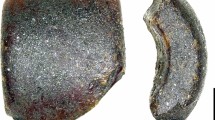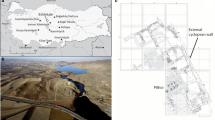Abstract.
Excavations below the A.D. 79 destruction levels in two houses at the Roman town of Pompeii, Italy included programmes of sieving and flotation for the recovery of biological remains. In addition to the usual finds of charred plant material and bones representing crop processing or food waste, and mineralised remains from sewage, were numerous burnt offerings. Cones and seeds of stone pine, fruit such as fig and grape and nuts such as walnut and hazel were present in many of them. Some of the offerings contained burnt bone, with the heads and feet of cocks (male domestic fowl) being particularly well represented. There was some change in the plants and animals used for the burnt offerings with time. These offerings could be related to domestic worship described in literary sources and depicted as offerings on altars in Pompeiian wall paintings at shrines to the Lares (household gods). The burnt offerings resulted in the preservation by charring of fruit that are not usually burnt during their processing for consumption. They also presented a taphonomic problem because re-worked charred material from burnt offerings was likely to have been a major component of other charred assemblages from the sites.
Similar content being viewed by others
Author information
Authors and Affiliations
Additional information
Received November 22, 2001 / Accepted February 26, 2002
Rights and permissions
About this article
Cite this article
Robinson, M. Domestic burnt offerings and sacrifices at Roman and pre-Roman Pompeii, Italy. Veget Hist Archaeobot 11, 93–100 (2002). https://doi.org/10.1007/s003340200010
Published:
Issue Date:
DOI: https://doi.org/10.1007/s003340200010




